
Rick’s Aloe and Butterfly Garden

The current population of monarch butterflies is a mere 4% of what it formerly was. These once ubiquitous butterflies are on the brink of extinction. Anyone with even a small garden, in any part of the US, can help reverse this sad trend.
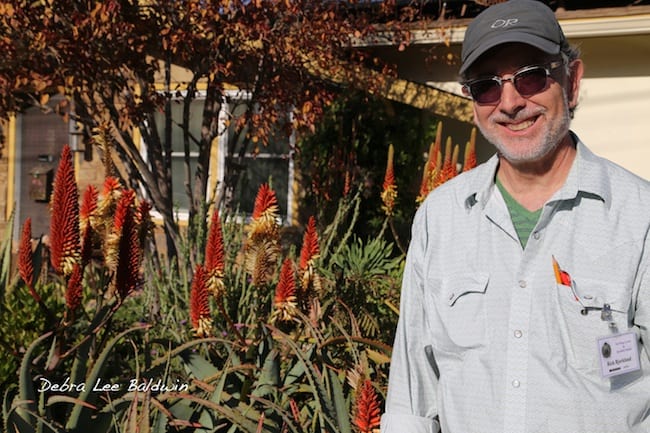
I knew that Rick Bjorklund’s garden in San Diego would delight me with its aloes, but I didn’t expect to see butterflies who felt the same way. Not only do monarchs love aloe blooms, their offspring have settled into Rick’s garden, too.
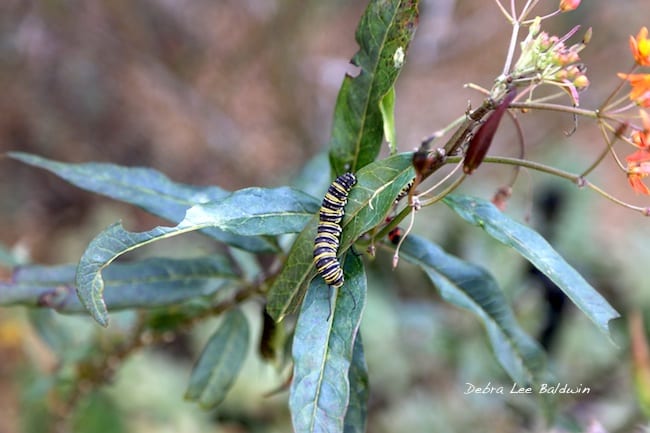
This is because Rick also cultivates milkweed, the one and only food of monarch caterpillars. His numerous Asclepias curassavica shrubs are infested with striped, leaf-eating, antennaed tubes.

Hm. Which end is which?
Once they’re fat and sassy, caterpillars look for a place to hang out…literally. To pupate, they attach themselves to a branch or eve, and their skin splits open, revealing a conical box that resembles a jade earring. What a surprise to see a chrysalis hanging from a kalanchoe (below). It’s amazing that insects native to the Americas are at home in a garden of plants mainly from Madagascar and South Africa.

This one’s attached to an agave leaf.
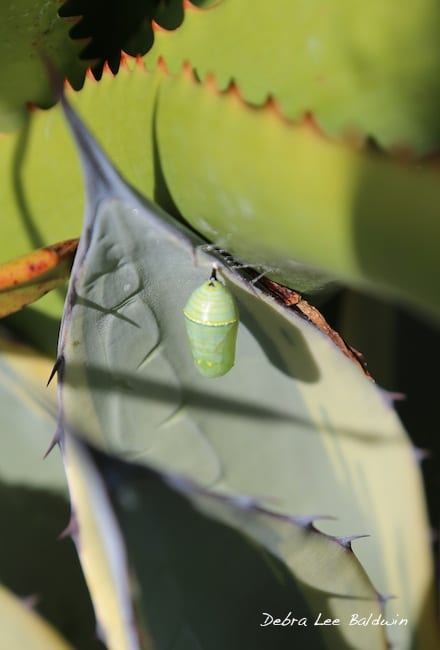
Here’s what happens next (photo courtesy of http://www.monarch-butterfly.com/):
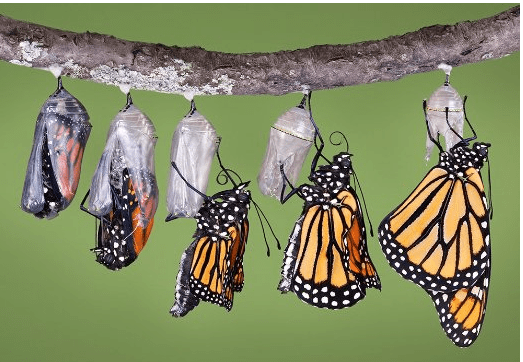
Monarchs also like Verbena bonariensis. I photographed this in a northern CA garden in early autumn.
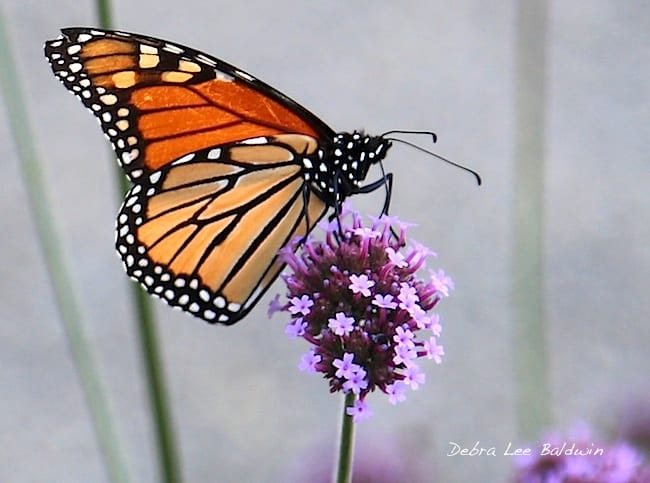
What every friend of butterflies should know:
— To promote the survival of monarch butterflies, cultivate milkweed (one or more plants in the genus Asclepias). Native to the Americas, milkweeds can be cultivated as far north as Quebec.
— When designing your monarch-habitat garden, position nectar-producing plants (like aloes, daisies and verbena) near milkweed. Adult butterflies look for both when laying their eggs, to ensure that their offspring will have plenty to eat.
— Refrigerate milkweed seeds three to six weeks prior to sowing. Get them off to a good start in peat pots with a thin covering of topsoil (they need sunlight to germinate). Transplant into the garden when rooted, four to six weeks after germination, in a full-sun location. Daytime highs should be at least 70 degrees F. Plants grow 36 to 60 inches tall, and can be spaced 12 to 18 inches apart.
— Monarchs and other butterflies have liquid diets. They like muddy water for its minerals, and the nectar of numerous flowers, which they ingest through a proboscis that unfurls and serves as a flexible drinking straw.
— Monarchs produce four successive generations annually, each with phases of egg, larva, pupa and butterfly. Adults of the first three generations live two to six weeks. The fourth generation, born in the fall, migrates to a warmer climate where the butterflies live through the winter, mate, and then return north.
— Butterflies fly best when temperatures are between 80 and 100 degrees. They’ve been clocked at 12 mph.
— Make sure butterflies have plenty to eat by supplementing their diet with a quality commercial nectar. To keep ants out of a butterfly feeder, coat an inch or so of the rod that supports it with Vaseline. Clean the feeder and replace the nectar daily. Place the feeder close to the milkweed and flowering plants in your garden, but out of direct, hot sun lest the liquid evaporate.
— Provide a mud puddle as a water source, ideally near a boulder on which butterflies can sun themselves.
Resources for butterfly gardeners:
Online article on saving and aiding butterflies, by British expert Clive Harris of DIY Garden, who emailed me: “76% of our butterfly species have declined over the past 40 years, so anything that helps spread the word about protecting these little chaps would be massively appreciated.”
Milkweed seeds
Butterfly feeder
Butterfly nectar
Reference books:
Milkweed, Monarchs and More by Rea, Oberhauser and Quinn
Monarch Butterfly by Gail Gibbons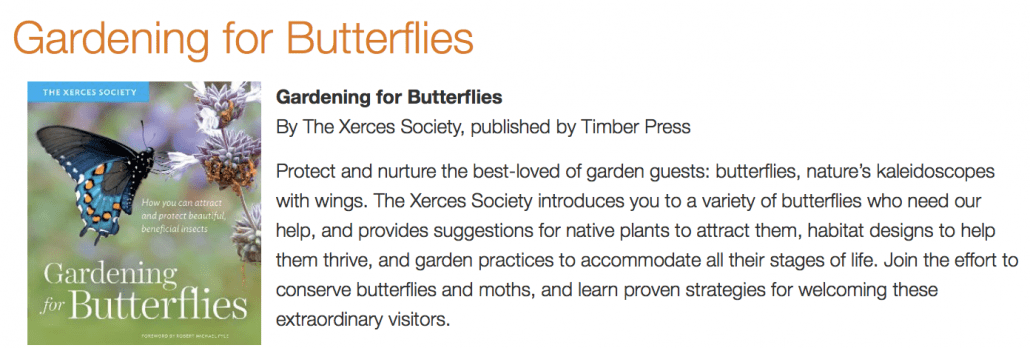

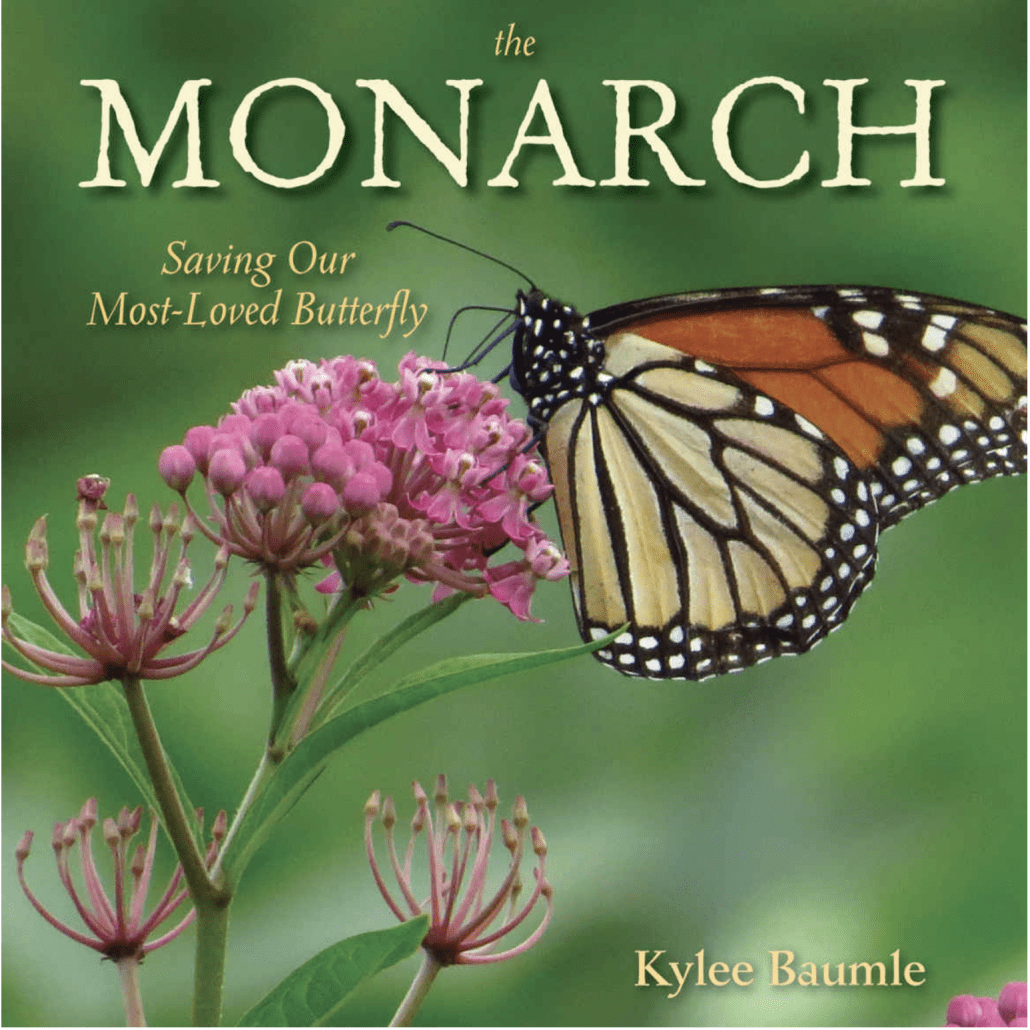
What time of year should you plant the seeds? I have seeds saved from last year.
Thanks,
Jan
Hi, Jan — Get them started right away and then plant them out in the garden after all danger of frost has passed.
Great information and photography! May I ask what camera do you use?
What variety of succulents does Rick use to attract the butterflies?
I am so glad I found this info!!! I have 10 chrysalis and 4 cats this late in the season. I have been worried about what they will eat when they eclose since we have gone to drought tolerant plants. But, we have plenty of succulents and aloes! Thank you so much!! This is a keeper!
So happy to hear it. Thanks, Hollie!